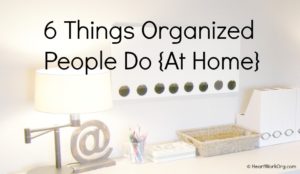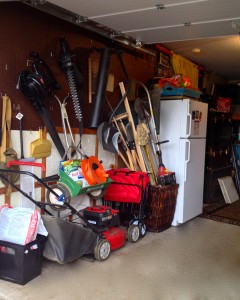 While visiting Italy I learned the maxim, Americans Live to Work, while Italians Work to Live. Their work day seemed a little longer, but the pace appeared less frenetic. They started a little later but enjoyed leisurely lunches and animated banter with coworkers.
While visiting Italy I learned the maxim, Americans Live to Work, while Italians Work to Live. Their work day seemed a little longer, but the pace appeared less frenetic. They started a little later but enjoyed leisurely lunches and animated banter with coworkers.
Sitting in cafes observing the Italian lifestyle was as interesting as taking in their architecture. They appeared to savor the moment, dining alfresco, without waiting for the weekend to jam chores and fun into forty-eight hours. I admired this philosophy and tried to integrate it into my life upon return.
I became more aware of certain turns of phrase here in the States. Sentences such as, “I have to Chair the fundraiser again this year,” now had a different ring to them. When someone said, “I have so many events and obligations, but I can’t eliminate any of them,” it somehow sounded different.
Many of us approach work with the same mentality. Is there something about our culture that equates being busy with a badge on honor? Are we concerned about appearing lazy if our schedules are less than hectic? I’ll admit to needing to learn to say no. It’s not easy.
How does this relate back to time management? Simply stated, the way we use our time can often be a manifestation of our beliefs.
If we believe that anything less than busy is unambitious, our calendars will be filled accordingly. If we want a life that reflects our goals and dreams, decisions should be made mindfully before the calendar fills up.
In terms of time management, often the goal is to try to fit more tasks into our life. I lean toward minimalism in my organizing practice, and I believe the same minimizing principals can help us with time management. Yes, we need to plan work, meetings, errands, and time with friends and family. The idea here is to step back and do all this mindfully. Start with your goals or the goals of your family. We can work and give back, but we can do so joyfully. Here are some points to remember:
Business and pleasure don’t need to be separate. As long as you conduct yourself with appropriate decorum, work can be fun too. Live in the moment. Strive to be present. It certainly seems to work in Italy.
Can you believe it’s October already? Where have the last 10 months gone? With the holidays on the horizon, now is a great time to get your kitchen organized, whether or not you plan to use it a lot in the coming months. There is nothing like a healthy kitchen makeover.
Having a kitchen that is well organized, stocked with healthy foods, and free of nutritionally deficient ones is important if you want to upgrade the quality of food that you and/or your family are eating and make it easy to prepare quality meals.
Here are 5 tips to get you started and to help you maintain what you’ve already organized.
1. Store items near where you use them. Store your dishes and utensils near the dishwasher. Store your pots, pans, and bakeware near the stove and oven. Make sure all your plasticware have bottoms and lids that fit together. This will save time, energy, and space when you need them and ease putting them away.
2. Arrange “like” with “like” in your pantry. Keeping similar items together makes it easy to know how much of an item you have and if you need to buy more. For example, keep all pastas on a shelf, soups on another shelf, and condiments on a 3rd shelf.
3. Keep masking tape and a Sharpie near your leftover containers and/or plastic bags. Having supplies at the ready allows you to easily label every leftover with the date and contents. Store leftovers in one place in the refrigerator. This will help you throw out expired food and will remind you to go through your refrigerator and cabinets for any other old food items.
4. Store extra plastic bags in one larger plastic bag or a container. Storing all the bags in one spot makes it easier to find them when you are in a hurry and to recycle them for future use.
5. Keep counters clear. Store seldom-used appliances in another area of the house (e.g., on a shelf in the basement, hallway closet or garage). This will free up counter space to prepare meals.
Making some simple changes will help you get the most out of your time in the kitchen. You will save time, energy, and space keeping things where you use them. An organized kitchen makes it easier to cook at home to improve and maintain a healthy lifestyle. You will save money eliminating duplicate and triplicate purchases and by eating out less. Family members will be able to help with meal preparation and clean-up when they know where things are stored. Finally, your life will be simplified, and you will be able do the things you really want to do.
What are you going to do to make your kitchen a healthy area of your home? Now is your time to go From Bedlam to Brilliance!
 If you come to my house, you won’t see a perfect, magazine-ready home. But you will see a clutter-free, tidy space, unless the kiddos are having a LEGO-fest. Then all bets are off.
If you come to my house, you won’t see a perfect, magazine-ready home. But you will see a clutter-free, tidy space, unless the kiddos are having a LEGO-fest. Then all bets are off.
Want a more clutter-free home all the time? Take note of things that organized people do to keep their home organized.
While there are many more things that organized people do, these 6 things that organized people do might help you to stay more on track in your own home.
 Have you always wanted to organize some or all of your home, but you just can’t seem to get started? Below are some helpful hints to get you on your way.
Have you always wanted to organize some or all of your home, but you just can’t seem to get started? Below are some helpful hints to get you on your way.
1. Schedule it
First and most importantly, timing is everything. Pick a time of day when you have the most energy.
Keep in mind that if you’re tired, the effort will be over before you really make a difference.
Minimize interruptions as much as possible.
Be sure you’ve had something to eat before you start as you’ll need energy for decision making, moving, and lifting.
2. Ask why this is important?
Why has this project been nagging at you? Write down the reason. (I’m serious).
If and when you begin to have trouble with whether or not to keep or toss an item, you can simply ask yourself, “Does this item help or hinder the purpose I am planning for this space?”
3. Purge
There is logic behind minimizing and surrounding yourself with only the things you truly love and find useful.
Visual clutter is distracting, can hinder our attention, and is not conducive to a serene environment.
Depending on the purchase, the following years will require you to dust it, wash it, dry it, hang it up or fold it, maintain it, repair it, iron it, and, eventually, donate it.
4. Sort
Keeping similar items together will enable you to know how much you have of any given item, and it will eliminate unnecessary purchases.
If this is done in all areas of your home, it can add up to big savings.
5. Location, location, location
Everything we own should be stored in a carefully selected ‘home.’
Store items where you use them.
Staying organized needs to be easy. For example, removing a lid on a hamper so things don’t pile up on top of it.
Schedule time to address these areas so the simple act of putting things away is a breeze.
6. Procrastination
Clutter often adds up to postponed decisions. Whether facing a stack of paper or an intimidating project, ask yourself these questions:
-Are you hesitating because you need information? If so, make a list of what you need and who might be able to help.
-Are you simply a bit intimidated by the scope of the task? If so, break the task down into bite sized pieces.
-Can you commit to scheduling each ‘piece’ to your calendar?
7. Maintenance
A few minutes each day is all you need. I’ve been asked on many occasions, “Will my home stay organized after doing this work?” I like to use the analogy of weight loss when responding. With a little effort, and some careful decision making each day, you can maintain your achievement with pride.
–Taking 5 to 10 minutes per day to put things in their ‘home’ will keep your house in great shape.
–You’ll want to limit what’s coming in. Consider instituting a ‘one-in, one-out’ policy. Space is not infinite. Therefore, when buying a new piece of clothing consider letting go of an old piece.
–Resist impulse buys. Wait 24 hours.
–Make conscience decisions about the life cycles of your possessions. For example, let’s say that you decide magazines will only be kept for one month. You would throw the last issue out when the new issue comes in.
8. The payoff, celebrating!
Achievements and goals can be anti-climatic without reveling in them.
Having a home that is organized provides a surprising sense of pride, relief, and readiness.
You’ll have the freedom to host a spontaneous dinner party or barbecue at a moment’s notice.
This is the lifestyle that no accumulation of small possession can replace.
Whatever you do to celebrate, I suggest you reward yourself with experiences, not possessions. The experiences are the things we remember far longer.
 Did you know that there is a ‘National Clean Out Your Garage Day?’ Well, sure enough there is, and it was last Saturday, September 12, 2015. Why not take advantage of the beautiful, upcoming autumn season, and get the process started?
Did you know that there is a ‘National Clean Out Your Garage Day?’ Well, sure enough there is, and it was last Saturday, September 12, 2015. Why not take advantage of the beautiful, upcoming autumn season, and get the process started?
Purging your garage and utilizing all the space your driveway affords, is the perfect spot to sort through all the clutter that you’ve accumulated over the years. Soon enough, you’ll need your Halloween décor and Thanksgiving Day bin, and if you’re anything like me, you’ve been busy entertaining, traveling, and heading to the pool all summer. Believe it or not, even as a professional organizer, my garage tends to get messy. There’re serving platters from my last social gathering, cases of beverages that haven’t been placed into the garage fridge yet, suitcases from our last trip, my pool chairs, and my cooler which I bring to the shore on the weekends. Also, I have my donation bags that I fill year round, electronics that I plan to recycle for my clients, and gardening tools that I keep on the floor for ongoing projects.
Below are some helpful tips to help you get the process started:
–Set up bins & trash bags in the driveway labeled donate, shred, trash, recycle, & sell. Keep in mind that most liquor stores give boxes away for free, and they are small enough to handle when heavy.
–Put everything that is on the floor outside in the driveway. Now you can walk safely around your garage. Sweep and dust as you go.
–Make a plan as to where you’re going to store your belongings. For example, garden supplies on this wall, tools here & seasonal items there. Set it up like a little store. Use temporary labels for your specific zones.
–Start sorting like with like. Maybe you’ll need some shelving. Personally, I like Gorilla shelves or clear bins. Also, I use nice big labels on all sides of the bins and on the shelves.
Even though ‘National Clean Out your Garage Day‘ is history, the present state of your garage may require your getting it done even though it is a few days or weeks later. If the task seems a little daunting, that’s the perfect time to ask for a some help. Professional organizers are well equipped to help with the most exhausting of projects. You’ll get it done right, and you’ll get it done quickly!
 Eventually, the time may come when you feel like the amount of ‘stuff’ you have surrounded yourself with in your home is beginning to have a negative effect on you. For years, those items may have brought you comfort. However, now you may feel claustrophobic in your own personal space. When those feelings begin to occur, and you want to make a change but do not know how, that is usually when it’s time to call a professional organizer.
Eventually, the time may come when you feel like the amount of ‘stuff’ you have surrounded yourself with in your home is beginning to have a negative effect on you. For years, those items may have brought you comfort. However, now you may feel claustrophobic in your own personal space. When those feelings begin to occur, and you want to make a change but do not know how, that is usually when it’s time to call a professional organizer.
The most common description I hear when a potential organizing client calls me is; “I am so overwhelmed.” Upon arriving at the home, I may also hear “I’m so embarrassed,” or “Have you ever seen anything this bad before?” Let me put your mind to rest. As an organizer, I am not there to judge. I am there to help. Professional organizers want to help or we would not be in this profession.
It’s not always easy to clear away things you’ve amassed in your home, whether they are collectibles or household items that just seem to keep accumulating. When sorting through excess things in your home, whether you consider those items clutter or treasured keepsakes, please understand that organizing is a process that takes time. It involves purging, separating, and categorizing every individual piece to achieve the desired results.
Others that are not experiencing the same emotional issues as you when it comes to de-cluttering may have no empathy for your situation. They tell you to “toss it,” or “just throw that stuff out”. Letting go of items can be a daunting task and working with an understanding expert is invaluable whether you wish to accomplish an organized desk, office, closet, room or your entire home.
Your professional organizer will not only facilitate this process, but bring you a sense of calm and understanding as you work through this course of action together. Please don’t misunderstand, it is important for you, as the owner of the possessions, to be a part of this decision making process. Otherwise, you may only be relocating items from one space to another.
Professional organizers can be likened to life coaches, who are defined as somebody who provides advice and support to people who wish to improve their lives, helping them to make decisions, solve problems, and achieve goals. I often hear “I know I should be able to do this on my own, but I can’t seem to make myself do this without you.” Guess what, that’s ok. That comfort, guidance and understanding is much of what we, as professional organizers, bring to you. Of course, we also have the obvious capability to assess and accelerate your project, and then bring it all together with our uncanny sense of space planning to give you a tidy new space.
And isn’t that what you wanted all along; an organized space, free of clutter, that you can find comfort in, and be proud to call your own?